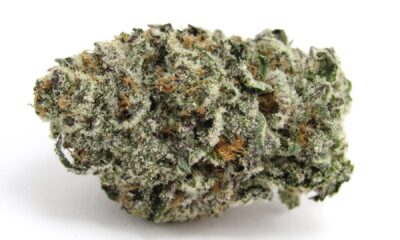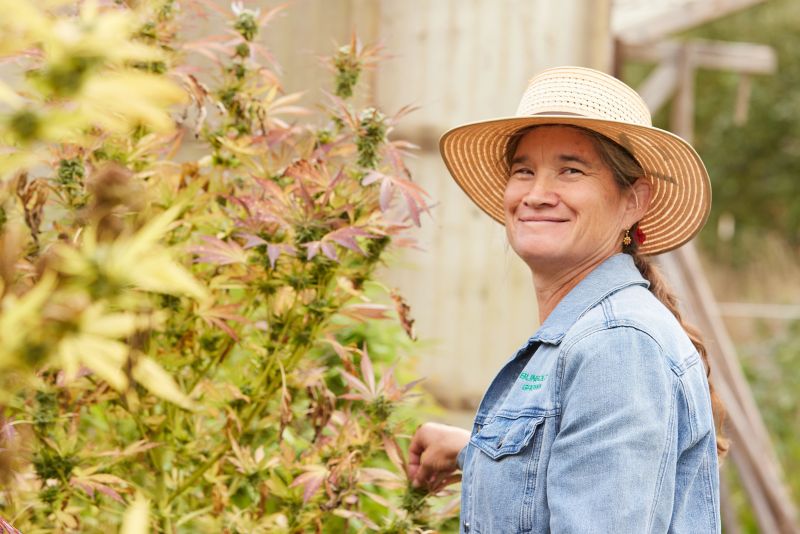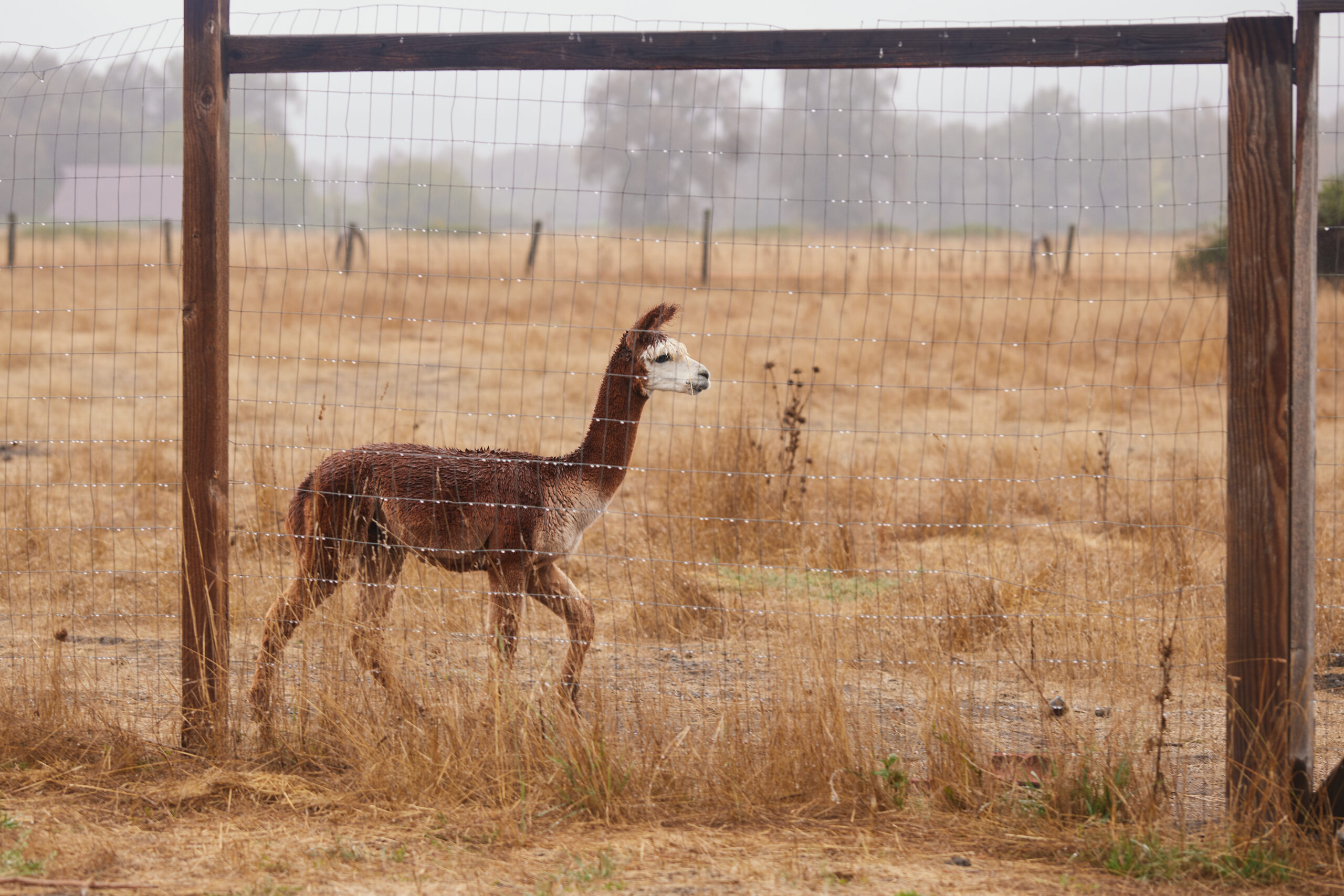Culture & industry
Traffic Death Rates Fell In States That Legalized Marijuana, New Study Finds, While Those That Kept Criminalization Saw ‘Slight Increase’
Published
1 year agoon
By
admin
States that legalized marijuana in 2016 saw meaningful declines in traffic fatalities during the years immediately following the policy change, according to a new study by Quartz Advisor. Takeaways were less clear, however, over a longer period of time that included years the report describes as “anomalies” nationwide.
Ultimately, the paper concludes, motor vehicle safety “should not be a significant concern for marijuana legalization initiatives,” especially when measured against alcohol.
“As of yet, studies have failed to show that legalization of cannabis has resulted in any significant increase in traffic fatalities in the places where it has been legalized,” it says. “However, the same cannot be said for alcohol, an intoxicant that remains legal, widely available, and deeply ingrained in our culture.”
In states that legalized marijuana, “traffic fatalities declined or remained the same in the three years that followed, compared to a slight increase in states where it remained illegal.”
The findings, which are not peer-reviewed, examined traffic fatality data from four states that legalized adult-use cannabis in 2016: California, Maine, Massachusetts, and Nevada. Quartz Advisor then compared those states’ vehicle death rates to the national average as well as to rates in five states where marijuana remained illegal during that period: Idaho, Indiana, Kansas, Nebraska, and Wyoming.
In the three years following the change, the report says, none of the four legalized states saw an increase in traffic deaths. Most, in fact, saw declines.
“Three of four the four states saw a significant decrease in vehicle deaths over that span,” the paper says, “while the rate in Maine showed no change. Massachusetts saw the biggest drop, as rates fell 28.6 percent in the three years following legalization.”
Combined, the four states that legalized marijuana saw an 11.6 percent drop in traffic death rates from 2016 to 2019. That’s a sharper decline than the national average, which fell 10.6 percent over the same period.
That’s a far better outcome than in the five states the report examined where marijuana remained illegal, which together experienced a 1.7 percent increase in their combined traffic death rate from 2016 to 2019.
What might seem like a clear picture, however, gets muddier when researchers expanded the analysis to include data from 2020 and 2021, the most recent years for which National Safety Council (NSC) numbers were available. Over that period of time, the vehicle death rate in fact rose in states that legalized marijuana, although less than in the U.S. as a whole. The states where cannabis was illegal, meanwhile, saw vehicle fatality rates dip.
“Among the states that legalized marijuana in 2016, the vehicle death rate increased by 6.0 percent between 2016 and 2021,” the report says. “While this is an increase, it is slightly less of an increase than the national average, which saw a 6.2 percent increase in the traffic fatality rate over the same period. The vehicle death rate dropped by an average of 0.7 percent in the five states that have not legalized cannabis during this period.”
Why consider ignoring two entire years of data? The report explains:
“In many ways, 2020 and 2021 were anomalies, and this remains true in the vehicular accident trends. After decades of declining accident rates in the U.S., traffic fatalities picked up in 2020 and stayed high through 2021. The U.S. as a whole saw traffic fatality rates spike 18.9 percent from 2019 to 2021. States that legalized marijuana in 2016 saw a similar increase of 19.9 percent. States that have not legalized—and are notably more rural than ones that did—saw the vehicular death rate fall 2.3 percent over that period.”
“Because of this, we thought it was important to see what rates looked like with 2020 and 2021 removed from the data set,” it continues. “And it turns out, they look quite different.”
Quartz Advisor called the set of observations “interesting and nuanced—but ultimately limited.” So the publication talked to Judi Watters, public information and consumer outreach for the Maine Bureau of Insurance, who cited a Casualty Actuarial Society report from December 2022 that examined data from the U.S. and Canada from 2016 to 2019.
“The tests for the decriminalization effect on fatalities failed to detect a statistically significant change,” the 2022 report says about its U.S. findings. Similarly, the analysis “showed no statistically significant changes in the average cost per claim and claim frequency after marijuana legalization in Canada.”
The new Quartz Advisor report says that “while there is no evidence to suggest that legalizing or decriminalizing marijuana makes roads more dangerous, that is not to say that it is safe to drive while under the influence of cannabis.” It references a 2010 meta-analysis published in The American Journal of Addictions that found marijuana “causes impairment in every performance area that can be reasonably connected with safe driving of a vehicle.”
Oddly, however, that doesn’t always seem to make driving behavior commensurately more dangerous.
The 2022 Casualty Actuarial Study found that while marijuana use does affect driving, “the behavior is not always riskier; for example, slower speeds and longer following distances of impaired drivers have been reported.”
The American Journal of Addictions report includes a similar caveat:
“Surprisingly, given the alarming results of cognitive studies, most marijuana-intoxicated drivers show only modest impairments on actual road tests,” it says. “Experienced smokers who drive on a set course show almost no functional impairment under the influence of marijuana.”
Looming over popular concerns about cannabis-impaired driving is the fact that there exists no reliable test to screen for cannabis impairment specifically. Standard drug tests make it difficult or impossible to know whether someone is under the influence of marijuana or consumed it days or even weeks ago.
This summer, a report in Congress for the Transportation, Housing and Urban Development, and Related Agencies (THUD) bill said that the House Appropriations Committee “continues to support the development of an objective standard to measure marijuana impairment and a related field sobriety test to ensure highway safety.”
In February, the head of the American Trucking Association (ATA) discussed the problem with a congressional committee, arguing that lawmakers need to “step up” to address the conflict between state and federal cannabis policy as the industry faces shortages.
Tens of thousands of commercial truckers are testing positive for marijuana as part of the federally mandated screenings, data from the Department of Transportation (DOT) show.
Sen. John Hickenlooper (D-CO) sent a letter to DOT last year seeking an update on the status of a federal report into research barriers that are inhibiting the development of a standardized test for marijuana impairment on the roads. The department is required to complete the report by November under a large-scale infrastructure bill that President Joe Biden signed.
Experts and advocates have emphasized that evidence isn’t clear on the relationship between THC concentrations in blood and impairment.
A study published in 2019, for example, concluded that those who drive at the legal THC limit—which is typically between two to five nanograms of THC per milliliter of blood—were not statistically more likely to be involved in an accident compared to people who haven’t used marijuana.
Separately, the Congressional Research Service in 2019 determined that while “marijuana consumption can affect a person’s response times and motor performance … studies of the impact of marijuana consumption on a driver’s risk of being involved in a crash have produced conflicting results, with some studies finding little or no increased risk of a crash from marijuana usage.”
Another study from last year found that smoking CBD-rich marijuana had “no significant impact” on driving ability, despite the fact that all study participants exceeded the per se limit for THC in their blood.
This article originally appeared on Marijuana Moment.
You may like
-


Latest Trump Weed Rumor – Trump Will Federally Deschedule and Decriminalize Cannabis, but Not Legalize It
-


Webinar Replay: Post-Election Cannabis Wrap – Smoke ’em if You’ve Got ’em
-


I Had Just One Puff
-


Marijuana firms Eaze, Green Dragon find new life after $10 million capital infusion
-


Get some rest on Modified Grapes—November’s Leafly HighLight
-


Is Kratom Addictive? Understanding Dependence, Risks, and Safe Usage
Culture & industry
Huckleberry Hill Farms and the history of the Whitethorn Rose cannabis strain
Published
8 months agoon
March 12, 2024By
admin
In the heart of southern Humboldt lies Huckleberry Hill Farms, a legacy outdoor cannabis grow started by John Casali. Unlike many of the regulated farms that sprouted up in the wake of Prop 64, Huckleberry Hill stood through the war on drugs era, and its story is steeped in passion, struggle, and resilience. It also led to the creation of the award-winning Whitethorn Rose cannabis strain.
 Gina Coleman/Weedmaps
Gina Coleman/WeedmapsIn the late 1960s, Casali, a teenager then, was immersed in the art of cultivation, learning the process from his mother. “[She] was my guiding light. She taught me the tenderness required for plants to thrive,” he shared. But the harsh realities of the war on drugs cast a shadow over their beautiful farm life. “My parents decided to cease cultivation due to escalating law enforcement. They got afraid of the multiple helicopters in the air throughout the year, dropping guys down on wires and eradicating weed.”
“It was all I knew; it was all I wanted to do — cultivate and honor what my mom had taught me.” — John Casali
Casali remained rooted in his passion, but it would eventually lead to his arrest and 10-year prison sentence in 1996. “One morning, I woke up to 30 federal agents coming up my driveway. They held a nine-millimeter to my head, and for the next nine hours, they searched my place. A year and a half after that, they came back with an arrest warrant.”
 Gina Coleman/Weedmaps
Gina Coleman/WeedmapsHis arrest, considered one of the longest federal incarcerations for a non-violent cannabis offense, struck a harsh chord, especially for someone who’d never even received a speeding ticket before. And while serving time in prison, tragedy struck his family. His parents, who had been traveling and fishing for months aboard a commercial albacore boat, encountered a devastating accident, and Casali’s mother tragically passed away. He recalled this period as one of the most challenging phases of his incarceration. “Those years tested my spirit, but the community’s support kept me going.”
Casali was released in 2004, and he found himself in a changed landscape, one where attitudes toward cannabis had massively shifted — no more helicopters over properties. Still driven by his passion for cultivation, he resumed his cannabis journey and even received a symbolically powerful gift from a friend: a preserved plant cut that was used to breed the Whitethorn Rose strain, an honor and testament to him and his mother’s legacy.
 Gina Coleman/Weedmaps
Gina Coleman/WeedmapsThis genetic preservation — maintaining a strain for a decade — embodies an emotional journey where friendship, loyalty, and love for the craft transcend the bounds of time and adversity. Casali created this unique strain by crossing Paradise Punch and Lemon OG.
Paradise Punch had been borne from his mother’s collaboration and was crafted for its early harvesting properties, allowing it to avoid possible mold due to October rains. The Lemon OG was a gift from a friend; combining the two was a convergence of heritage and camaraderie. With time, the strain gained the notoriety it so rightly deserved.
Whitethorn Rose, a strain forged during the war on drugs, now blossoms in a reformed era. It’s a symbol of endurance, community resilience, and triumph.
Moreover, testing by Columbia University in New York revealed the specific complexity of Whitethorn Rose. It boasts over 60 different terpenes and a staggering 444 cannabinoids. One such rare terpene found in this strain is selinadiene, which carries potential therapeutic properties.
Its emergence in the regulated folds of California’s cannabis market is due to its persistence and the unbreakable spirit that defines Huckleberry Hill Farms. Collaborations with Belle, Frenchy’s Cannoli apprentice from Heritage Mendocino, amplified its presence, leading to multiple Emerald Cup wins. This year, over 90% of the farm is devoted to cultivating Whitethorn Rose.
 Gina Coleman/Weedmaps
Gina Coleman/WeedmapsThe journey from cultivating alongside his mother in the late ’60s to overcoming incarceration and emerging stronger, determined to honor his roots, defines John Casali’s personality. Huckleberry Hill Farms is inspirational and deeply rooted in honesty, community, and an unquestionable passion for sun-grown cannabis.
Huckleberry Hills Farms is getting ready to hit California’s market, and you must try the amazing Whitethorn Rose strain. This cultivar has a remarkable history and a uniquely exotic floral flavor, making it a distinctive cultivar worth experiencing.
The post Huckleberry Hill Farms and the history of the Whitethorn Rose cannabis strain appeared first on Weedmaps News.
Culture & industry
Terroir and tradition: growing craft cannabis and the art of dry farming at Sunboldt Grown
Published
9 months agoon
March 3, 2024By
admin
When cruising down the Avenue of the Giants in Humboldt County, one might not realize there’s a hidden gem for cannabis enthusiasts just around the bend. Nestled along the Eel River in the heart of the Emerald Triangle lies Holmes Flat, a picturesque locale surrounded by towering Redwoods. The scenery? Simply breathtaking, drawing visitors in with its lush, fertile ambiance.
There, you’ll find Sunboldt Grown and its founder, Sunshine Cereceda, a local legend with soil under her nails and a heart as expansive as the California sky.
 Gina Coleman/Weedmaps
Gina Coleman/WeedmapsBorn in San Luis Obispo and raised in Humboldt since the age of seven, Cereceda grew up amidst the wilderness near Garberville in a community of activists and artists dedicated to preserving the region’s majestic trees. Tending to a garden since she was knee-high, she credits her mother’s green thumb for instilling in her a deep love for organic cannabis cultivation.
The challenges of craft cannabis in a commercial world
Her journey to becoming an Original Gardener is rooted in her upbringing within Humboldt’s activist community, where she formed deep connections to the land. She sold her first pound of weed at 14 years old in order to finance her education, which led to her developing her expertise through years of hard work and dedication. To this day, Cereceda’s OG status persists.
 Gina Coleman/Weedmaps
Gina Coleman/WeedmapsHowever, the shift from the underground market to the passing of Proposition 215 in 1996 and Proposition 64 in 2016 brought about major changes, turning her world upside down. What was once a dance with law enforcement became a tangled web of legalities and over-regulation. She grappled with the demands, yearning for authenticity amidst the new state of chaos. The transition from medical to adult use felt like a crash course in bureaucracy, leaving her fatigued and longing for the simplicity of yesteryears.
California’s legal landscape poses significant hurdles for craft farmers like Cereceda. Mandatory distribution and the absence of direct sales leave traditional farmers at the mercy of intermediaries, diluting the spirit of their craft.
 Gina Coleman/Weedmaps
Gina Coleman/Weedmaps“The beauty of craft does not sell itself,” she said, “We have a big disadvantage not being able to do direct [cannabis] sales … Compliance demands encroach upon precious time meant for nurturing our crops.” She dreams of a future where small farmers receive the support they need to thrive and where craft is cherished and celebrated in the marketplace.
Dry farming and the return to terroir
One of the characteristics that sets Cereceda apart from other growers is her cultivation techniques. She’s a farmer who doesn’t water her plants — a practice known as “dry farming.” It’s a centuries-old technique that involves cultivating crops without irrigation, relying solely on natural precipitation and soil moisture.
 Gina Coleman/Weedmaps
Gina Coleman/Weedmaps“Dry farming is about embracing the land and its natural rhythms,” she explained, “It’s a minimalist approach that allows terroir to shine through, bringing forth the true essence of the plant.” By eschewing irrigation and adopting low-intervention methods, dry farming conserves water and fosters a deeper connection between the farmer, the land, and the final product. “It isn’t suitable everywhere, but in regions like Humboldt, it’s worth pursuing … We avoid water addiction and enable plants to adapt naturally, resulting in a more resilient crop.”
Along with composting and strategic planting, Cereceda has honed her dry farming skills, growing cannabis that embodies the unique characteristics of Humboldt’s soil and climate.
 Gina Coleman/Weedmaps
Gina Coleman/WeedmapsAs the sun dipped below the horizon, it cast a warm glow over the rolling hills of Holmes Flat, where one thing was abundantly clear: Cereceda’s journey was far from over. From navigating the complexities of legalization to pioneering sustainable cultivation methods, she embodies the spirit of innovation and resilience that defines Humboldt’s cannabis culture.
Her focus on craftsmanship and terroir-driven cultivation is encapsulated in her products, growing craft cannabis that maintains the essence of Humboldt’s fertile soil and pristine climate.
The post Terroir and tradition: growing craft cannabis and the art of dry farming at Sunboldt Grown appeared first on Weedmaps News.
Culture & industry
Organic farming and regenerative agriculture
Published
9 months agoon
February 9, 2024By
admin
In the vibrant yet challenging landscape of California’s cannabis community, Sun Roots Farm is a rare gem situated in Covelo, California. Driving up its winding entrance will lead to a picturesque landscape, unveiling the incredible experience of visiting the farm’s gorgeous gardens. There, you’ll be greeted by towering cannabis plants reaching 12+ feet high and weighing an impressive 10 – 20 pounds each.
Founded by Forrest Gauder and Patricia Vargas, Sun Roots Farm is a testament to the resilience and integrity within the cannabis community.
By embracing a lifestyle around sustainability, they’ve created an enchanting, forest-like atmosphere with their approach, growing massive plants requiring a ladder for proper care. This landscape is common in Mendocino County, and due to dry weather, it makes for the perfect environment for growing colossal cannabis plants.
The founders’ vision of regeneration
Over the past 12 years, Gauder and Vargas have transformed Sun Roots Farm into their permanent residence. With its foundation rooted in regenerative agriculture, the couple not only cultivates cannabis plants but also tends to various vegetables, herbs, fruits, fungi, native medicinal plants, and perennial gardens.
To nourish their garden, they rely on contributions from their animals, with coops full of chickens and fields of alpacas serving as an exemplary model of regenerative agricultural practices. The farm aims to increase biodiversity and introduce closed-loop farming, where farmers recycle all organic material back into the soil and the farm. This system fosters a harmonious coexistence between the land and its inhabitants.
Exclusive seeds and strains
The farm takes pride in its commitment to exclusive seed cultivation, a distinctive approach that sets them apart. Gauder described the process: “We grow all our plants from seed yearly. From the year before, we’ll select pollen and put it on certain plants to make new [strains] — we’ll then collect those seeds. By the middle of February, we’ll crack open the chosen varieties, starting them in a greenhouse … and propagating them until they reach five-gallon pots.”
The decision to grow exclusively from seed is rooted in the farm’s philosophy of embracing genetic variability and maximizing plant vigor. “The reason behind growing from seed … is the genetic variability,” said Vargas. “We grow exclusively from seed. Local breeding has played a pivotal role in shaping plants that are finely adapted to the valley’s conditions, showcasing positive characteristics such as mold resistance, pest resistance, frost resilience, and more.”
Sun Roots Farm’s staple strain is Velvet Purps, bred locally over ten years ago. This strain descends from the valley and is made from various crosses by Gauder’s family and colleagues. Its origin begins with Jah Goo, crossbred with its brother T2 and Magic Bus, giving rise to a cultivar with impressive purple characteristics.
“The plant produces anthocyanins to protect itself, but it’s also purple,” explained Gauder. “You can find anthocyanins and all sorts of fruits and vegetables, too. It’s the pigment, the color. This compound has beneficial aspects when consumed by humans, like antioxidants, and it protects the plant. We had a bad frost a few years ago that destroyed a lot of gardens around here, but all our purple plants were just fine.”
Packed with trichomes and a captivating blend of berry and pine aromas, Velvet Purps luxuriously unfolds on the palate. This unique strain, locally bred and cultivated by Sun Roots Farm and a select few friends only, expresses a distinctive charm. Beyond its sensory delights, it delivers a tranquil and relaxing buzz, making it an ideal choice for evening consumption.
In a market saturated with options, the exclusivity of strains like Velvet Purps emphasizes the farm’s commitment to offering something truly exceptional.
A farm dedicated to sustainable practices
The farm is also Dragonfly Earth Medicine (DEM) certified. “To be DEM is to achieve a certification beyond organic through third-party verification,” explained Vargas, “It’s a community committed to intentional growth and the creation of closed-loop systems.”
Sun Roots Farm maximizes what the land naturally provides, whether it’s blackberry vines for tea or alpaca manure from their animals. “It’s similar to a homesteading lifestyle,” Vargas continued, “incorporating the cultivation of cannabis with an element of integrity into the product.” From closed-loop systems and water conservation to wildlife sanctuaries and companion planting, the farm is a testament to sustainable living techniques.
Vargas also emphasized the importance of observation and mindfulness in their approach, “Take a moment to observe before you go ahead and start harvesting or before you go ahead and start crunching all over the earth.” Gauder added, “As long as we keep stuff covered in the garden, magic always happens. So we’re feeding the bugs, which eat the material on the ground that feeds the plants. It’s a continual cycle of life, rebirth, death, life, rebirth, death.”
The farm extends its commitments beyond the cultivation season. After harvest, they break down plants, mulch with oak leaves, and cover them with hay, creating a winter blanket that transforms into a layer of beautiful topsoil come spring.
At Sun Roots Farm, a calming environment and sustainable living encourage a deeper connection to the products they make and the ones we consume. The farm is a reality where integrity, intention, and regenerative practices converge to create a sanctuary of sustainable cultivation in the heart of California.

Latest Trump Weed Rumor – Trump Will Federally Deschedule and Decriminalize Cannabis, but Not Legalize It

Webinar Replay: Post-Election Cannabis Wrap – Smoke ’em if You’ve Got ’em

I Had Just One Puff

Marijuana firms Eaze, Green Dragon find new life after $10 million capital infusion

Get some rest on Modified Grapes—November’s Leafly HighLight

Is Kratom Addictive? Understanding Dependence, Risks, and Safe Usage

New Rule, December 5: Oregon Cannabis Retailers, Processors and Labor Peace Agreements

The CBD Dog Treat Guide

Trippin’ Golf Balls – Can Magic Mushrooms Help Your Golf Game?

Australian Broadcasting Corp Alleges Military Veterans Have Been Targeted By Medicinal Cannabis Companies Via Social Media & Offered Free “Product”

Distressed Cannabis Business Takeaways – Canna Law Blog™

United States: Alex Malyshev And Melinda Fellner Discuss The Intersection Of Tax And Cannabis In New Video Series – Part VI: Licensing (Video)

What you Need to Know

Drug Testing for Marijuana – The Joint Blog

NCIA Write About Their Equity Scholarship Program

It has been a wild news week – here’s how CBD and weed can help you relax

Cannabis, alcohol firm SNDL loses CA$372.4 million in 2022

A new April 20 cannabis contest includes a $40,000 purse

Your Go-To Source for Cannabis Logos and Designs

UArizona launches online cannabis compliance online course
Trending
-

 Cannabis News2 years ago
Cannabis News2 years agoDistressed Cannabis Business Takeaways – Canna Law Blog™
-

 One-Hit Wonders2 years ago
One-Hit Wonders2 years agoUnited States: Alex Malyshev And Melinda Fellner Discuss The Intersection Of Tax And Cannabis In New Video Series – Part VI: Licensing (Video)
-

 Cannabis 1012 years ago
Cannabis 1012 years agoWhat you Need to Know
-

 drug testing11 months ago
drug testing11 months agoDrug Testing for Marijuana – The Joint Blog
-

 Education2 years ago
Education2 years agoNCIA Write About Their Equity Scholarship Program
-

 Cannabis2 years ago
Cannabis2 years agoIt has been a wild news week – here’s how CBD and weed can help you relax
-

 Marijuana Business Daily2 years ago
Marijuana Business Daily2 years agoCannabis, alcohol firm SNDL loses CA$372.4 million in 2022
-

 California2 years ago
California2 years agoA new April 20 cannabis contest includes a $40,000 purse



